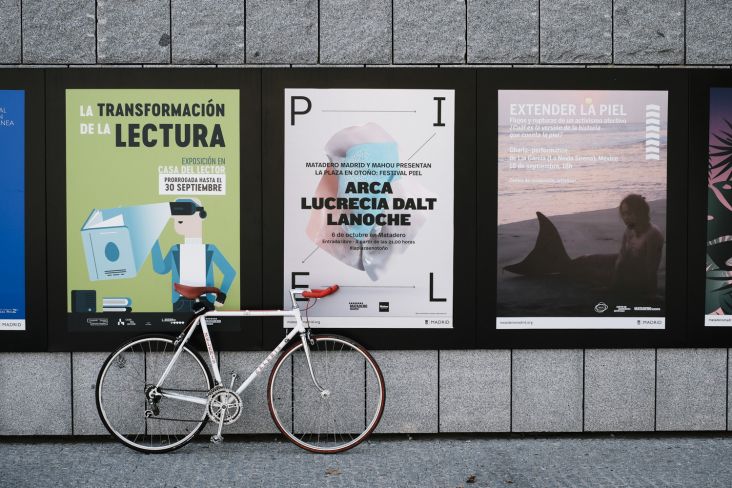Avoid the general pitfalls of a new client relationship with these helpful tips
We've all had our fair share of "nightmare clients". Ones who have no idea what they want, make unrealistic demands or aren't prepared to pay invoices on time. But could we, as business owners, be partly to blame?

Image licensed via Adobe Stock
It's our job to be project managers, after all. We have to lead the client and consult to guide the relationship along the right path. We have to ensure the best possible outcome, from establishing the project scope to delivering a successful piece of work that makes the client happy.
To achieve that success, it's about avoiding the general pitfalls during the very first meeting or conversations with a potential client. Here, I'll share some tips on how to start on the right foot.
Establish your terms and have faith in them
With every new client relationship, you have the power to define your terms. How you operate your business is entirely up to you. No one has the right to tell you otherwise.
If you want to be paid within 30 days, those are your requirements. If you charge £80 per hour, then that's what you'll bill the client. If you're not available at weekends, that's perfectly acceptable. Be confident with who you are and what you do. Establish how you function as early as possible to avoid any future headaches.
Request a detailed brief upfront
Always ask for a brief. If there isn't one available, sit down with the potential client to create a complete scope. Because if you're providing fixed costs for projects, this initial process is crucial. You need to know what they want, why they want it, and when they want it before you even think about putting together a proposal.
Don't be afraid to use this opportunity to suggest things you think will benefit the client. Ideas they might not have considered. Not only will you impress them with your expertise, but you could also end up with a more lucrative project.
Outline precisely what you'll be delivering
I once had a client say to me, "I'll pay you when I'm satisfied with the work." This doesn't mean anything to me and is an impossible benchmark. Sure enough, he kept changing the goalposts throughout, and the project quickly grew out of control.
To avoid the same mistake, you need to determine realistic goals for each new project and then take the time to write a very detailed scope. List everything that you'll be delivering: the more information, the better.
Then add a very clear disclaimer: "Please note, any additional requirements will be charged at my hourly rate of £80."
Yes, this process can be tedious. Yes, it's time-consuming, and the client might say "no". But if you want the work, it'll save you loads of hassle further down the line when a client starts asking for "extras".
If there's no clear scope, suggest a retainer
Sometimes, the client won't know what they want. Rather than see this as a big red flag, use the opportunity to suggest a retainer, i.e. they can retain you as a consultant for a monthly budget of X days per month. Or they can set a monthly budget, and you log your time, charging your hourly rate accordingly.
I've done this on countless occasions, and it can work well. As long as you're very clear about your time and what you can deliver within that budget, the client should have realistic expectations. Express that if they want things done in a shorter timeframe, for instance, you have to increase the retainer to accommodate their needs.
Get a deposit before work begins
You're entering new and uncharted territory with each new client. You don't know who they are or whether they'll settle invoices on time. In which case, for projects – ask for 50% upfront and then bill them staged payments.
That way, you keep your cash flow healthy and the project moving along nicely. Whatever you do, hold back from delivering the final work until the last invoice is settled.
Remember that business is a two-way process
While it's tempting to moan about clients, it's essential to have a little self-awareness too. Could we be at fault if a client expects way too much? Can we blame them if we didn't clearly define deliverables early on?
If you're already in a toxic relationship with a client, you can always try and steer it back to safer territory. These people are just human and trying to do their job. They want to achieve something for their business or boss. They have their own pressures and time constraints. A lot of stress might be on their shoulders.
It's our job as consultants to recognise that and become a reassuring asset — someone they can trust and call upon when they need help. If we always assume clients are the enemy without first considering how we fit into the picture, then we'll likely make the same mistakes again and again.




 by Tüpokompanii](https://www.creativeboom.com/upload/articles/58/58684538770fb5b428dc1882f7a732f153500153_732.jpg)


 using <a href="https://www.ohnotype.co/fonts/obviously" target="_blank">Obviously</a> by Oh No Type Co., Art Director, Brand & Creative—Spotify](https://www.creativeboom.com/upload/articles/6e/6ed31eddc26fa563f213fc76d6993dab9231ffe4_732.jpg)
















